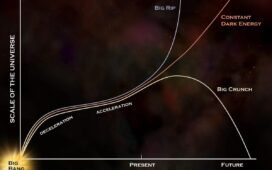Times dilate and lengths contract near the speed of light. Bizarre and confusing? Sure. But under relativity, it can’t be any other way.
120 years ago, a revolution took place in physics that — to an outsider — might seem like an inconsequential matter. 120 years ago, Einstein put forth his Special theory of Relativity, asserting that neither space nor time were absolute quantities, but rather the answers you’d get for measuring distances, positions, and durations would be dependent on your location and relative motion. The only absolute, Einstein contended, was the speed of light in a vacuum. This was indeed a revolutionary statement, but the formulas for working out how distances and durations changed in a velocity-dependent way, especially as you approached the speed of light, had already been worked out over a decade prior: the Lorentz transformations.
And yet, Einstein’s key insights, and the profundity of Special Relativity, were lauded and marveled at by even the physicists who had discovered the transformations previously. Even today, most laypersons only have a vague notion that “distances and times are relative” instead of absolute, not a solid understanding of how or why that is. Most people who study physics can only refer to…















